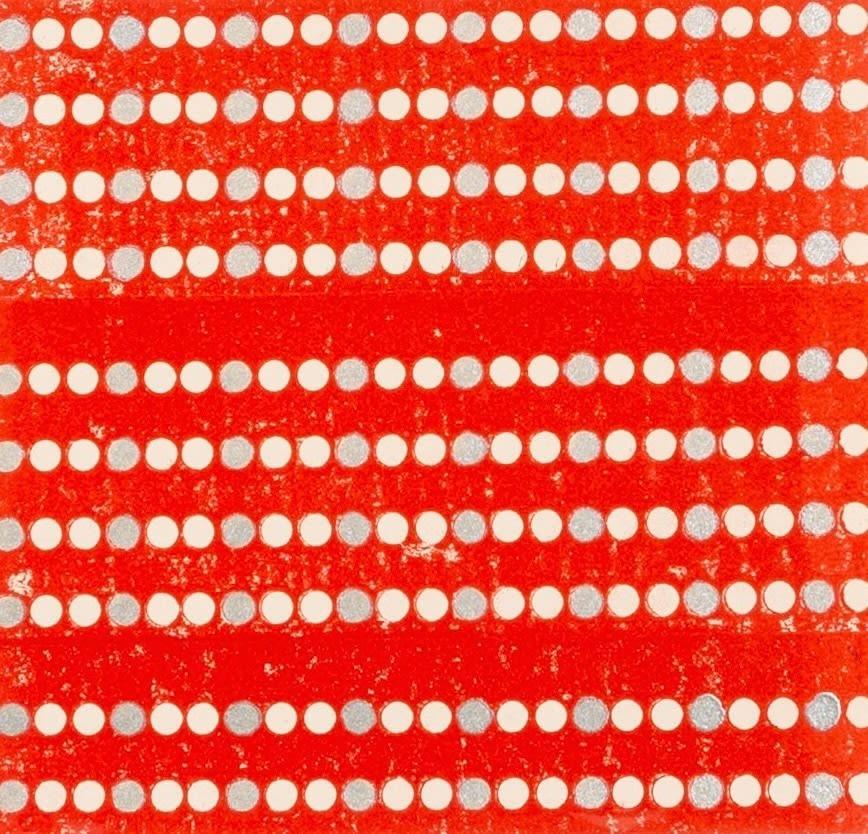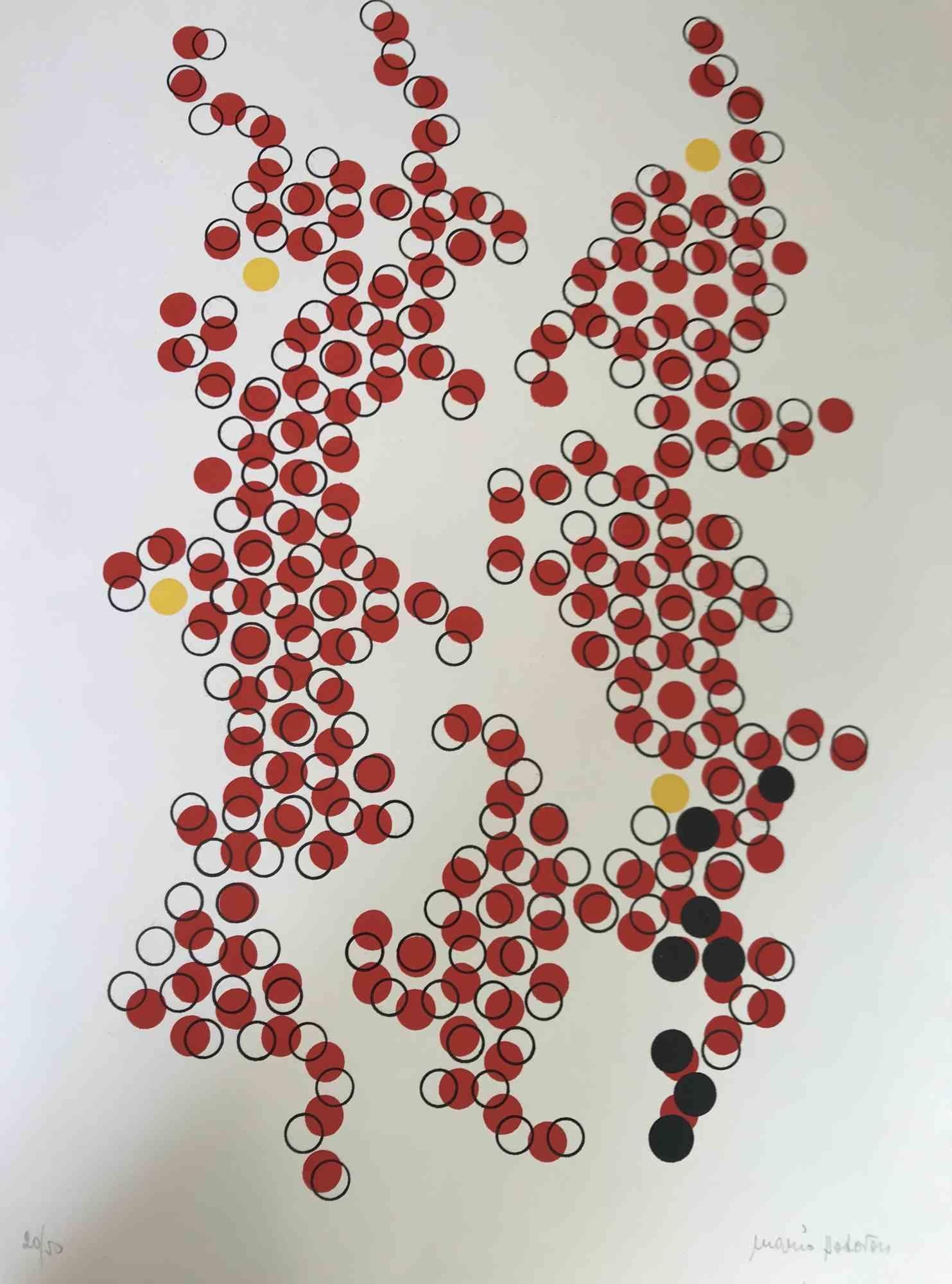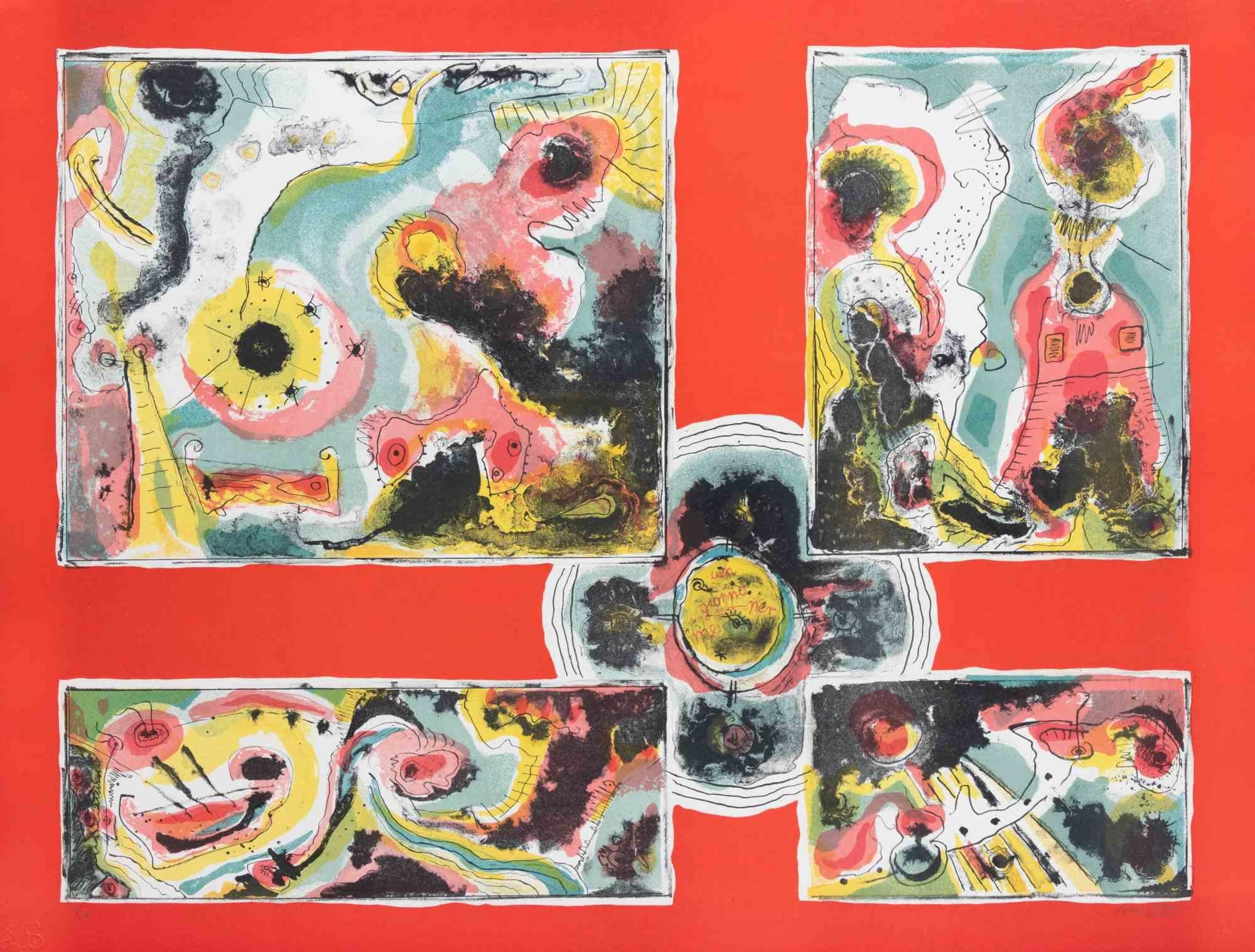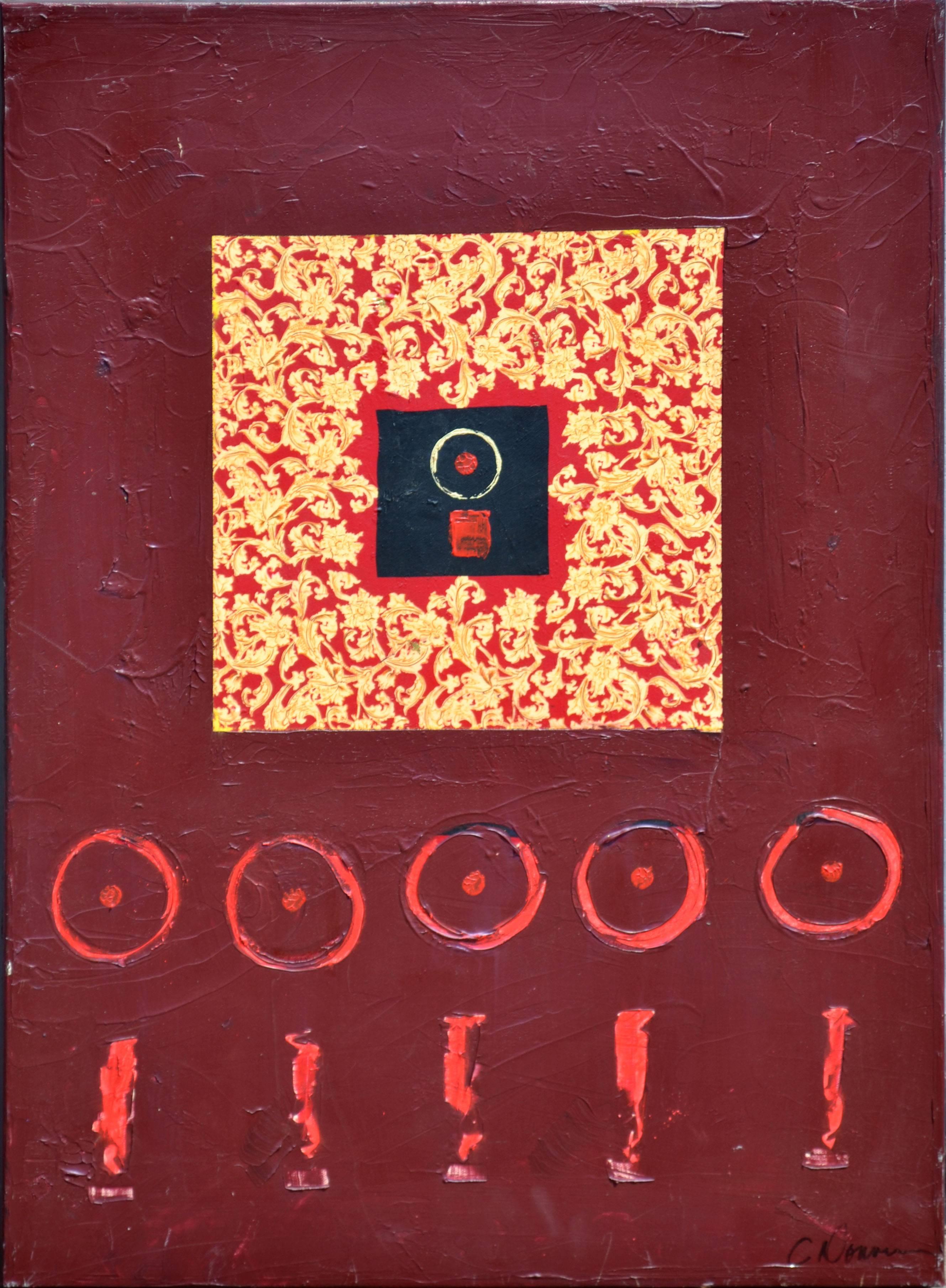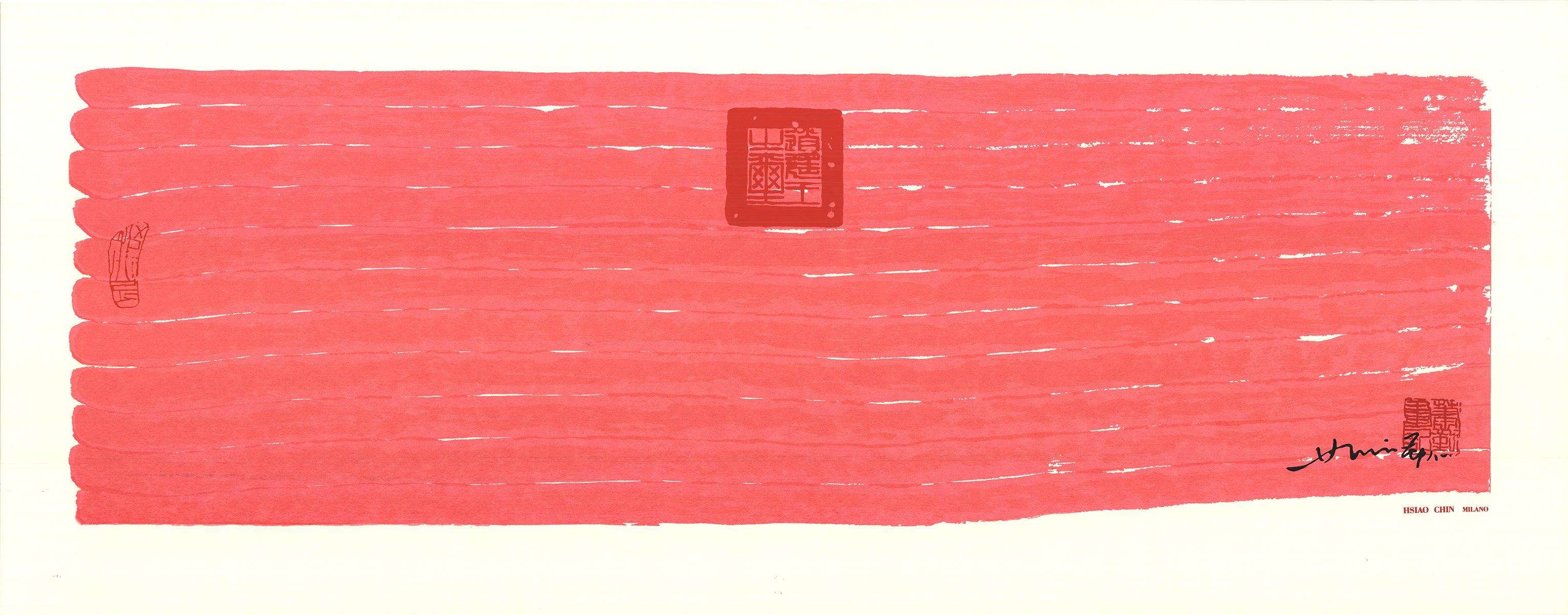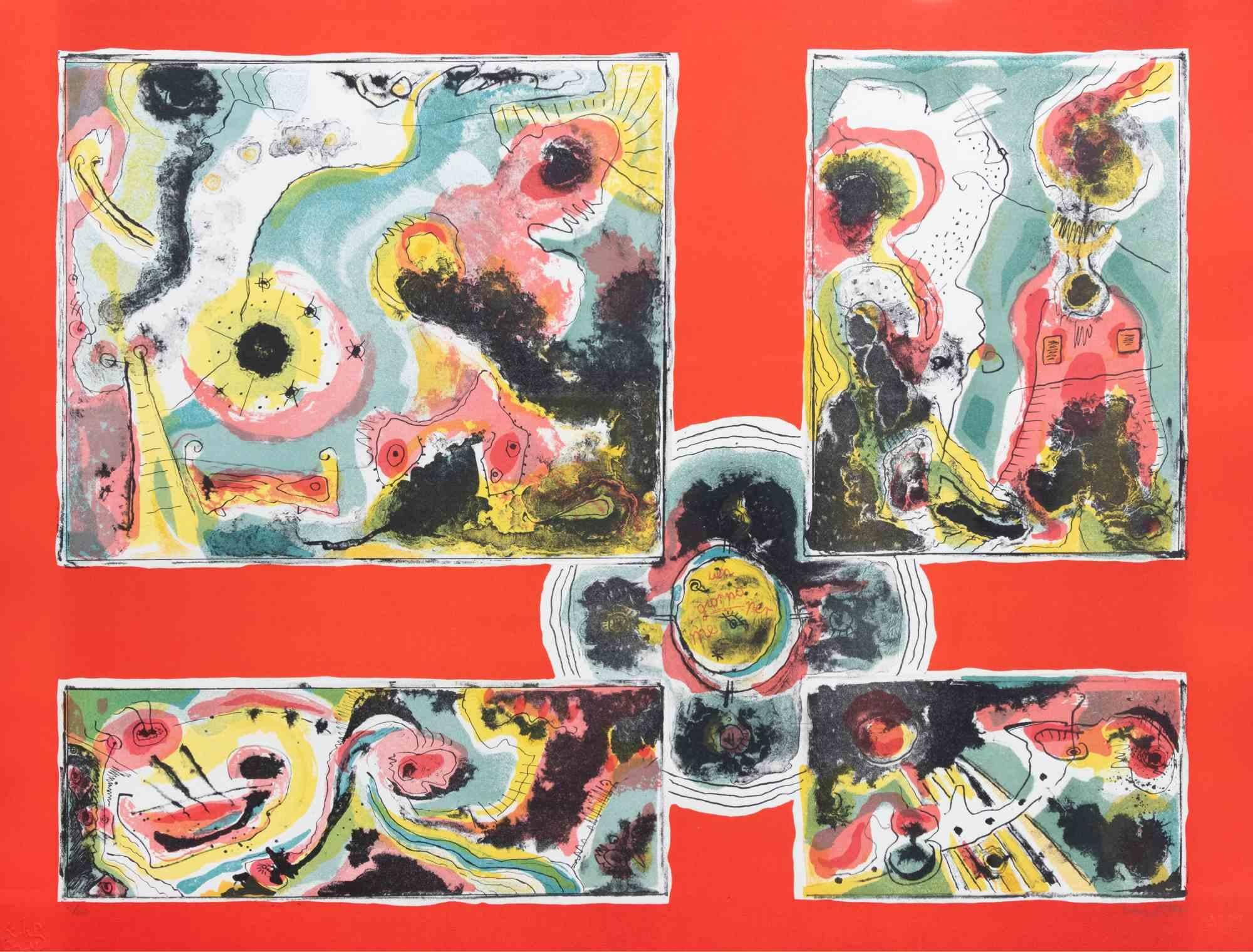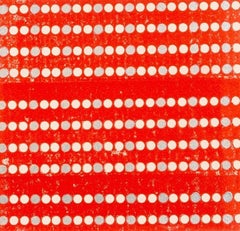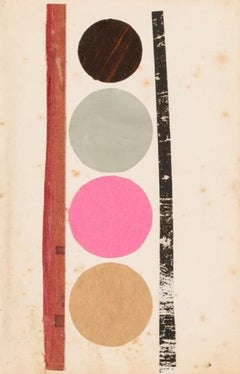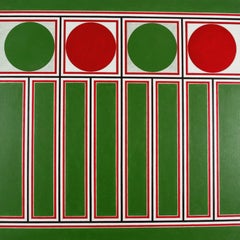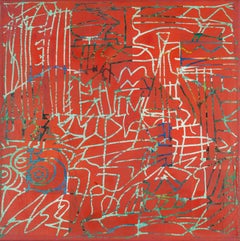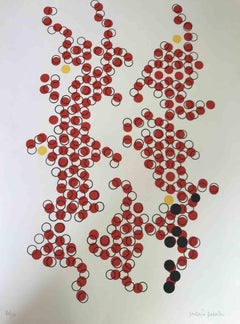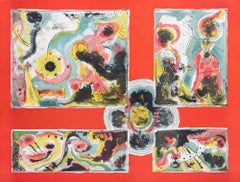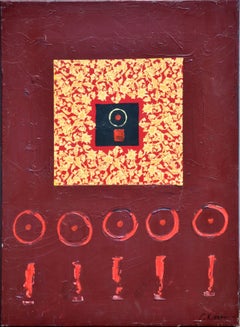Items Similar to Untitled (Four Red Circles), Collage with Ink by Thomas Nathaniel Davies
Want more images or videos?
Request additional images or videos from the seller
1 of 3
UnknownUntitled (Four Red Circles), Collage with Ink by Thomas Nathaniel Davies1972 circa
1972 circa
$2,211.65
£1,650
€1,917.51
CA$3,098.72
A$3,374.74
CHF 1,779.38
MX$41,046.56
NOK 22,375.65
SEK 20,986.53
DKK 14,318.57
About the Item
Untitled (Four Red Circles), Collage with Ink Painting, 1972 circa
Additional information:
Medium: Collage with ink
15.2 x 15.2 cm
6 x 6 in
Nathaniel Davies was born in Dowlais, Merthyr Tydfil, and studied at the Cardiff School of Art, where he was taught by Ceri Richards. In 1942 his studies were put on hold as he was called up for war service. After demobilisation, Davies completed his studies at Cardiff and, with a letter of recommendation from Ceri Richards, was awarded a teaching post at Newton Abbot Art School.
He married in 1958, bought a house with a studio, had four children and made paintings, sculptures, constructions and prints. His studio work and teaching kept him busy in Devon, though a number of artists visited Davies including Terry Frost, Patrick Heron and John Skeaping, who became a close friend and persuaded him to teach at The Royal College of Art. His works were exhibited in London and around the UK, including a solo exhibition after his death.
Davies is represented in the collections of the V&A; Ruth Borchard Collection; The National Museum of Wales.
- Creation Year:1972 circa
- Dimensions:Height: 6 in (15.24 cm)Width: 6 in (15.24 cm)
- Medium:
- Period:
- Condition:
- Gallery Location:Kingsclere, GB
- Reference Number:1stDibs: LU2718214573742
About the Seller
No Reviews Yet
Vetted Professional Seller
Every seller passes strict standards for authenticity and reliability
Established in 2010
1stDibs seller since 2024
43 sales on 1stDibs
Typical response time: 8 hours
- ShippingRetrieving quote...Shipping from: Kingsclere, United Kingdom
- Return Policy
Authenticity Guarantee
In the unlikely event there’s an issue with an item’s authenticity, contact us within 1 year for a full refund. DetailsMoney-Back Guarantee
If your item is not as described, is damaged in transit, or does not arrive, contact us within 7 days for a full refund. Details24-Hour Cancellation
You have a 24-hour grace period in which to reconsider your purchase, with no questions asked.Vetted Professional Sellers
Our world-class sellers must adhere to strict standards for service and quality, maintaining the integrity of our listings.Price-Match Guarantee
If you find that a seller listed the same item for a lower price elsewhere, we’ll match it.Trusted Global Delivery
Our best-in-class carrier network provides specialized shipping options worldwide, including custom delivery.More From This Seller
View AllDots on Red, Mixed Media by Theo Mendez
Located in Kingsclere, GB
Dots on Red, Mixed Media by Theo Mendez
Additional information:
Medium: Mixed media
15 x 16 cm
5 7/8 x 6 1/4 in
Category
20th Century Mixed Media
Materials
Mixed Media
Collage with Pink Circle, Geometric Abstract Collage and Mixed Media Work, 2024
By Daisy Cook
Located in Kingsclere, GB
Collage with Pink Circle, Collage Painting by Daisy Cook B. 1965, 2024
Additional information:
Medium: Collage
16 x 10 cm
6 1/4 x 4 in
Daisy Cook is a British painter of landscape...
Category
21st Century and Contemporary Mixed Media
Materials
Paper, Mixed Media
Red/Green Ornament Frieze I - Bold Green and Red Shapes, Abstract Oil Painting
By Gordon House
Located in Kingsclere, GB
Gordon House 1932-2004
Red/Green Ornament Frieze I, 1976-1977
signed and dated on the canvas overlap
acrylic on canvas
91 x 91 cm
35 7/8 x 35 7/8 in
Gordon House was born in 1932 in Pontardawe, South Wales. Early exposure to art on trips to the Glynn Vivian Art Gallery as a young boy inspired House towards creative endeavors and at the age of fourteen he was awarded a grant to enter art school which he accepted. From 1947 to 1950 he studied at Luton School of Art, Bedfordshire, and St. Albans School of Art, Hertfordshire. House's contemporaries included Richard Smith and John Plumb with whom he remained close. During the early fifties, after finishing art school, House began work as assistant to the ecclesiastical sculptor Theodore Kern. He also spent time at an advertising studio where he honed his burgeoning skills in typography and graphic design. In 1952 House was offered the position of designer for Imperial Chemical Industries Plastics Division where he stayed until 1959. This was followed by two years spent as graphic designer for the Kynoch Press in London. In 1961 House set out on his own as a self-employed designer and typographer. Initially this was supplemented by part-time teaching at art schools in and around London but by 1964 House was able to devote himself entirely to his design work which freed up valuable time to concentrate on his own artistic output in the studio.
In the late fifties, informed by the new art emerging from America and that of his contemporaries in England, House began to create large-scale abstract works which he was invited to show in 1959 at Dennis Bowen's legendary New Vision Centre in Marble Arch.
House was an active participant in the vibrant London art scene of the sixties, regularly attending lectures, exhibitions and discussions. In 1960 he exhibited in 'Situation' the key abstract exhibition of the decade held at the RBA Galleries. Other participating artists included Robyn Denny, Bernard and Harold Cohen, Gillian Ayres, John Hoyland, Richard Smith and William Turnbull among others. These artists, united by a common admiration for American Abstract Expressionism, were frustrated by the lack of exposure given to large-scale abstract works in commercial galleries so they organised their own exhibition. The name was derived from the participants' idea that an abstract painting that occupied the whole field of vision would involve the spectator in an 'event' or 'situation'. This exhibition was followed by 'New London Situation' in 1961 and a nationwide touring Arts Council presentation in recognition of the significance of the two earlier shows.
In 1961 House began producing his first prints at the Kelpra Studio, run by Chris and Rose Prater, where he made the earliest fine art screenprint ever to be produced in Britain. Artists such as Paolozzi and Hamilton followed in his footsteps and together they started a printmaking revolution in Britain. They cemented the medium of the screenprint in the world of fine art as opposed to the commercial sphere and secured the reputation of Kelpra in the process. Later, together with Cliff White, House set up the White Ink (Ltd.) print studio in London, where he produced etchings and wood engravings on a series of magnificent antique printing...
Category
1970s Paintings
Materials
Canvas, Acrylic
Untitled, circa 2001 - Abstract Oil Painting over Paper Collage
By Gordon House
Located in Kingsclere, GB
Gordon House was born in 1932 in Pontardawe, South Wales. Early exposure to art on trips to the Glynn Vivian Art Gallery as a young boy inspired House towards creative endeavors and ...
Category
Early 2000s Paintings
Materials
Canvas, Oil, Magazine Paper
Red/Green, from Study for Larger Tri Motif Series, 1977 - Gouache, Watercolour
By Gordon House
Located in Kingsclere, GB
Gordon House was born in 1932 in Pontardawe, South Wales. Early exposure to art on trips to the Glynn Vivian Art Gallery as a young boy inspired House towards creative endeavors and at the age of fourteen he was awarded a grant to enter art school which he accepted. From 1947 to 1950 he studied at Luton School of Art, Bedfordshire, and St. Albans School of Art, Hertfordshire. House's contemporaries included Richard Smith and John Plumb with whom he remained close. During the early fifties, after finishing art school, House began work as assistant to the ecclesiastical sculptor Theodore Kern. He also spent time at an advertising studio where he honed his burgeoning skills in typography and graphic design. In 1952 House was offered the position of designer for Imperial Chemical Industries Plastics Division where he stayed until 1959. This was followed by two years spent as graphic designer for the Kynoch Press in London. In 1961 House set out on his own as a self-employed designer and typographer. Initially this was supplemented by part-time teaching at art schools in and around London but by 1964 House was able to devote himself entirely to his design work which freed up valuable time to concentrate on his own artistic output in the studio.
In the late fifties, informed by the new art emerging from America and that of his contemporaries in England, House began to create large-scale abstract works which he was invited to show in 1959 at Dennis Bowen's legendary New Vision Centre in Marble Arch.
House was an active participant in the vibrant London art scene of the sixties, regularly attending lectures, exhibitions and discussions. In 1960 he exhibited in 'Situation' the key abstract exhibition of the decade held at the RBA Galleries. Other participating artists included Robyn Denny, Bernard and Harold Cohen, Gillian Ayres, John Hoyland, Richard Smith and William Turnbull among others. These artists, united by a common admiration for American Abstract Expressionism, were frustrated by the lack of exposure given to large-scale abstract works in commercial galleries so they organised their own exhibition. The name was derived from the participants' idea that an abstract painting that occupied the whole field of vision would involve the spectator in an 'event' or 'situation'. This exhibition was followed by 'New London Situation' in 1961 and a nationwide touring Arts Council presentation in recognition of the significance of the two earlier shows.
In 1961 House began producing his first prints at the Kelpra Studio, run by Chris and Rose Prater, where he made the earliest fine art screenprint ever to be produced in Britain. Artists such as Paolozzi and Hamilton followed in his footsteps and together they started a printmaking revolution in Britain. They cemented the medium of the screenprint in the world of fine art as opposed to the commercial sphere and secured the reputation of Kelpra in the process. Later, together with Cliff White, House set up the White Ink (Ltd.) print studio in London, where he produced etchings and wood engravings on a series of magnificent antique printing presses...
Category
20th Century Abstract Paintings
Materials
Ink, Watercolor, Gouache
Untitled by Mark Lancaster, 1967
By Mark Lancaster
Located in Kingsclere, GB
Untitled by Mark Lancaster, 1967
Additional information:
Medium: lithograph
73 x 63.5 cm
28 3/4 x 25 in
signed
Mark Lancaster was born Christopher Ronald Mark Lancaster, but early in life he decided that "Mark" was his favorite of the three names. Educated at Holme Valley Grammar School, 1949–52, and Bootham School, York, from 1952 to 55, after which he worked in a family textile business and studied textile technology for six years, painting in his own time, before going to King's College, Newcastle in 1961 to study Fine Art. From 1961 to 1965 Mark Lancaster studied under Richard Hamilton at the University of Newcastle upon Tyne, where he also taught from 1965–66, and then at the Bath Academy of Art, Corsham, Wiltshire, 1966–68, while living in London. He first visited New York City in 1964, where he worked briefly as an assistant to Andy Warhol, appeared in several Warhol movies, and met Jasper Johns, Ray Johnson, Ellsworth Kelly, Roy Lichtenstein, Frank Stella, James Rosenquist, Larry Rivers, Frank O'Hara, Robert Motherwell, Helen Frankenthaler, Norman Mailer and many others. In New York he photographed extensively, and started a series of paintings related to the imagery of the Howard Johnson...
Category
20th Century Abstract Prints
Materials
Lithograph
You May Also Like
Red Circles - Original Screen Print by Mario Padovan - 1977
By Mario Padovan
Located in Roma, IT
Red Circles is a beautiful colored screen print realized by Mario Padovan in 1977.
Hand-signed in pencil on the lower right.
Numbered on the lower left margin, edition of 20/50 co...
Category
1970s Abstract Abstract Prints
Materials
Screen
Red Abstract - Lithograph by Le Oben - 1970s
By Le Oben
Located in Roma, IT
Red Abstract is a contemporary artwork realized by Le Pond in 1970s.
Mixed colored lithograph.
Hand signed on the lower margin.
Numbered on the lower margin.
Edition of 66/100
Category
1970s Abstract Abstract Prints
Materials
Lithograph
Red Circle and Line Abstract
By Christine Donovan
Located in Soquel, CA
Beautiful burgundy red abstract painting with five light red circles near the bottom and lines directed underneath and a gold patterned square in the middl...
Category
Early 2000s Abstract Expressionist Abstract Paintings
Materials
Canvas, Oil
Hsiao Chin 'Untitled (Red)'- Lithograph
By Hsiao Chin
Located in Brooklyn, NY
This captivating lithograph by Hsia Chin, titled Untitled (Red), exemplifies the artist’s mastery of color and form. The piece features a striking use of red tones that dominate the ...
Category
Late 20th Century Prints and Multiples
Materials
Lithograph
$200 Sale Price
20% Off
Red Abstract - Lithograph by Le Oben - 1970s
By Le Oben
Located in Roma, IT
Red Abstract is a contemporary artwork realized by Le Pond in 1970s.
Mixed colored lithograph.
Hand signed on the lower margin.
Numbered on the lower margin.
Edition of 66/100
Category
1970s Abstract Geometric Abstract Prints
Materials
Lithograph
Abstract Red Circle #1
By Patricia A. Pearce
Located in Soquel, CA
Abstract red circle lithograph by Patricia A. Pearce (American, b. 1948). This piece is unsigned, but was acquired with a collection of other Pearce...
Category
1980s Abstract Abstract Prints
Materials
Paper, Lithograph
